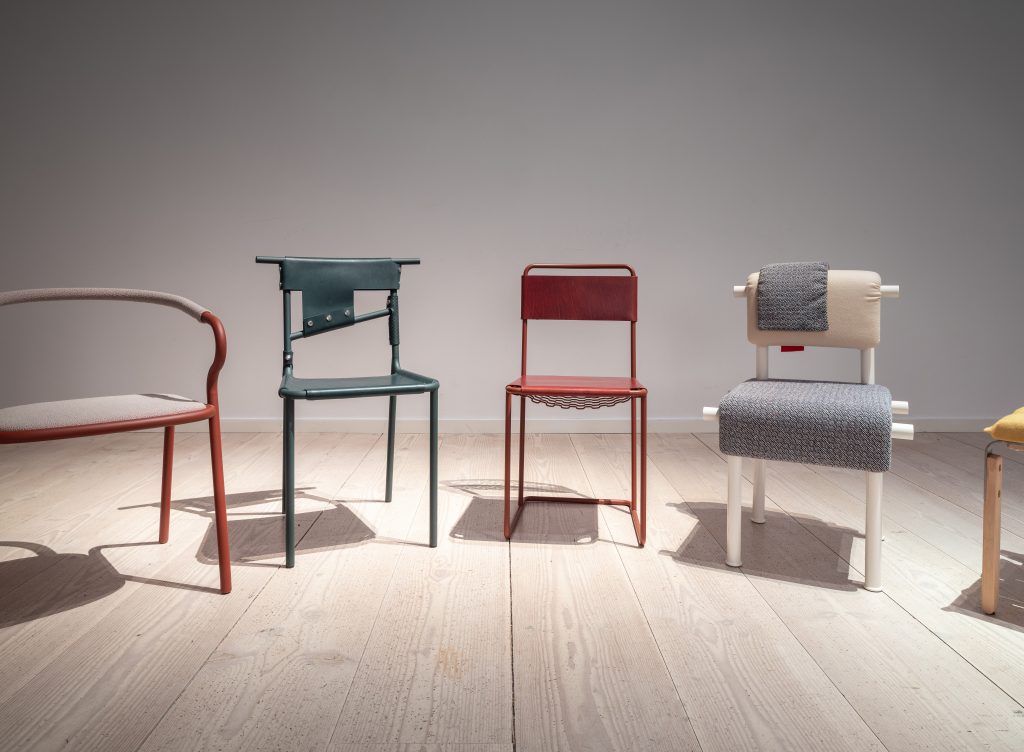Highlights from Stockholm Furniture + Light Fair 2018
Exemplary textures, materials and forms at this year’s event

Design’s new year began this week as Stockholm’s Furniture + Light Fair kicked off the international show calendar. Under the shadow of the recent passing of IKEA founder Ingvar Kamprad, it seemed almost as if many of the homegrown companies and designers were channeling some of his core beliefs—despite their new collections being worked on for at least 12 months. Because it feels like much on show was responding to the new phase of living and working we’re being ushered into. Sizes are shrinking, function is clear and unhidden, form is easy to behold and not challenging.
Of course, Scandinavia has always had these elements, favoring longevity over short-lived aesthetic trends. Yet there was a sense that producers and designers are realizing that today’s buyers need and want less, haven’t got much in the way of space, might well live and work in the same place and also move about a bit. Or, in other words, less stuff with more quality and not quite as shouty. Design conforming to demand.

Many of this year’s highlights came (perhaps predictably, but in a good way) from Stockholm’s own Note Design Studio. The rapidly expanding collective has always been prolific during the Furniture Fair, but 2018 saw them pepper the halls with their characteristic flowing form and non-conformist off-trend color palettes. (Of course, by the time of reading these colors will surely have been declared the year’s big thing, but be assured Note always leads and rarely follows.)
Visitors, press and public alike spent the week fawning over Note’s conceptual work for Tarkett—a vinyl flooring company. It matters not whether you’ve heard of them because the French flooring specialists made a real show of themselves. Note didn’t stop there either, assisting on a handful of stand concepts as overseas brands sought to tailor their offering to the Scandinavian market.

Swedish producer Fogia boasts a long list of potential future classics. Luca Nichetto released a soft, curvaceous new armchair Mame, inspired by the edamame bean’s form, which simply felt right.

Another Swedish company, Offecct‘s collaborative efforts often reads like design royalty. While the initial prototype was released last March, Jin Kuramoto’s chair Jin was still pulling admiring glances and winning awards. Made from flax fibers formed around a hollow core, it’s a chair with impeccable sustainable credentials. Offecct also pulled off what was considered the impossible, to team up with the Frank Lloyd Wright Foundation and release Soundwave Ennis—an acoustic panel based on Wright’s unmistakable tiles used in Ennis House.

Design studio Front always elicits a strong response. Still carrying their experimental charge which permeated early work, the group’s elegant new lamp Hoop for Zero is impressive, but our pick is the Adga chair made by Ire, which explores traditional and new weaving and webbing techniques.

Botton, a new sofa for Swedese is one of the many pieces we saw during the week that continue the trend that started last year with Andreas Engesvik’s Bollo chair, in which the upholstery seems to mould around the frame of the furniture, akin to a globule of molten liquid dropped while cooling onto the form.
Engesvik himself was asked by Fogia to revisit his Bollo chair and reduce its dimensions, perhaps this being the example of the new consumer demand.
Worth mentioning is that design right now seems to be branding and presenting itself more narratively than ever before. Individual brands are showing a collective lifestyle, where the stand concept and design offer a slice of curated living. An upmarket IKEA if you will. This year Kamprad’s legacy in this respect was posthumously alive and kicking.
Hero image courtesy of Fogia, all others courtesy of respective brands












